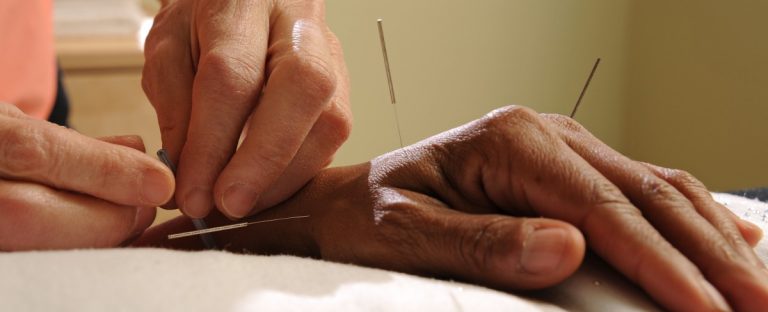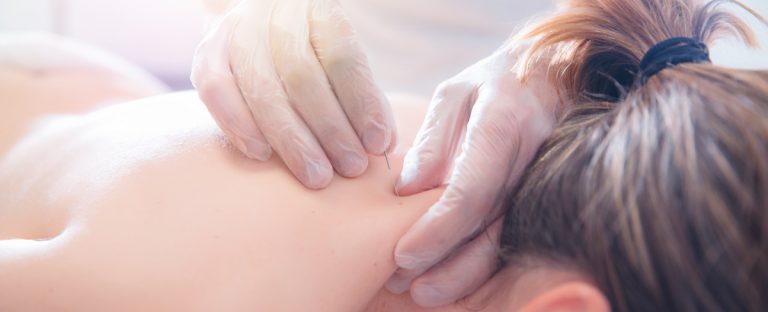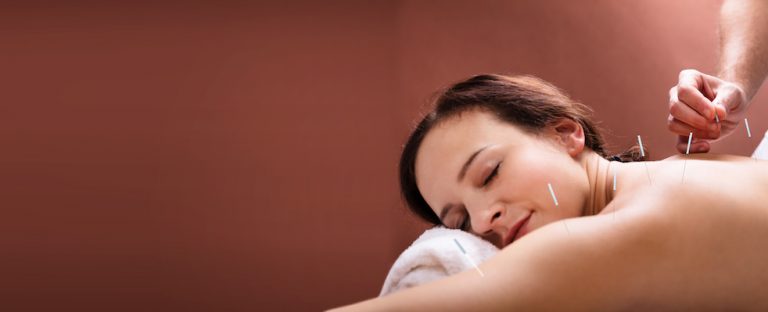The modern wellness industry is more competitive than ever, with countless providers offering various therapies and services. As an acupuncture or massage therapy practice, standing out from the crowd to attract more patients is crucial for growth and sustainability. But how do you achieve this? The answer lies in a well-crafted marketing strategy tailored to your unique strengths and services.
1. Understand Your Target Market
Before you start formulating a marketing strategy, you need to understand who you’re marketing to. What are the demographics of your ideal patient? What are their needs, and how can you meet them? Your target market could be athletes seeking recovery therapies, office workers seeking relief from desk-related aches, or elderly individuals managing chronic pain. By understanding your patients, you can tailor your services and messaging to appeal to them.
2. Develop a Strong Online Presence
In today’s digital age, a strong online presence is essential. A well-designed, user-friendly website is a must, providing essential information about your practice, the services you offer, and how you can help prospective patients. Ensure your site is search engine optimized with relevant keywords such as “acupuncture”, “massage therapy”, and “holistic healing”, to increase your visibility on search engines and attract more traffic to your site.
Additionally, listing your practice on online directories and review sites such as Google My Business and Yelp can boost your visibility and attract new patients. These platforms allow patients to leave reviews, greatly influencing prospective patients. Encourage your satisfied patients to leave positive reviews to build trust and credibility.
3. Leverage Social Media
Social media is an excellent platform to connect with your community, share valuable content, and showcase your services. Regularly post informative articles, health tips, behind-the-scenes glimpses of your practice, and patient success stories. Platforms like Instagram, Facebook, and LinkedIn are excellent places to start. Remember to engage with your followers by responding to comments and messages promptly.
4. Offer Online Booking
Convenience is a significant factor for modern consumers. Offering online booking via your website or practice management software like Holbie allows prospective patients to schedule appointments quickly and easily, improving their overall experience.
5. Educate Your Community
Educating your community about the benefits of acupuncture and massage therapy can attract new patients. Consider hosting workshops, webinars, or open house events where you can provide valuable information and answer any questions. You can also partner with local businesses, schools, or sports clubs to host wellness events.
6. Implement a Referral Program
Word of mouth is a powerful marketing tool. Encourage your existing patients to refer friends and family by offering a referral program. This could be a discount on their next session or a free add-on treatment for each referral.
Attracting new patients to your acupuncture or massage therapy practice requires a strategic approach. By understanding your target audience, establishing a robust online presence, leveraging social media, offering convenient booking options, educating your community, and implementing a referral program, you can expand your reach and draw in more patients.
Remember, consistency is key, and results may not come overnight. However, with perseverance and the right strategies, your patient base will grow, ensuring your practice’s ongoing success and sustainability. For more practice management tips, visit our website at www.holisticbillingservices.com.
In an era where technology is advancing at an unprecedented pace, maintaining a tech-savvy acupuncture practice can be a game-changer. Electronic Health Record (EHR) systems have become an essential component of effective practice management. In fact, a study conducted by the National Center for Health Statistics (NCHS) found that as of 2017, nearly 9 out of 10 (86%) of office-based physicians have adopted an EHR system. But how do you choose the right one for your acupuncture practice? Here are some tips to guide your decision-making process.
1. Understand Your Specific Needs
Every practice is unique, with varying requirements for software functionality. A study published in Perspectives in Health Information Management suggests that the practice’s needs should guide the selection of an EHR system. Understanding your clinic’s workflow, size, patient volume, and the specific features that will benefit your practice can help narrow down your choices.
2. Evaluate Usability and User Interface
According to a survey by the American Medical Association (AMA), 54% of providers expressed dissatisfaction with their EHR systems due to poor usability. Hence, the software’s user interface should be intuitive and easy to navigate, reducing the learning curve and enabling you and your staff to operate it effectively.
3. Ensure Data Security and Compliance
Patient data security is critical. A study by the Ponemon Institute found that healthcare data breaches cost $6.45 million on average. Thus, the EHR system you choose should comply with all necessary regulations, such as HIPAA, and provide robust data security measures.
4. Check Interoperability
The ability to share patient information with other healthcare providers is a significant advantage of EHR systems. According to the Office of the National Coordinator for Health Information Technology, 93% of hospitals had EHR technology to view, exchange, and receive health data with other health providers in 2015.
5. Consider Pricing and ROI
EHR systems can be an investment. However, when chosen wisely, they can provide substantial ROI through increased efficiency, improved patient satisfaction, and reduced administrative costs.
6. Test Customer Support and Training
Effective customer support and training are crucial for a smooth transition to a new EHR system. Therefore, opt for vendors who offer comprehensive onboarding and continuous support.
In conclusion, choosing the right EHR system for your acupuncture practice involves careful consideration of your unique needs, usability, data security, interoperability, pricing, and support. By taking the time to assess your options thoroughly, you can find a system that not only simplifies your practice management but also amplifies your impact on your patient’s health and well-being.
Are you still wondering how to make the right choice? Holbie offers an EHR system specifically designed for acupuncturists, chiropractors, and massage therapists, ensuring all your unique needs are covered. Feel free to get in touch with us to learn more.
In recent years, there have been tremendous advances in legislation expanding the coverage that Medicare provides to millions of seniors around the country. In particular, expanding coverage to include holistic medicine has been most notable with the recognition—albeit limited recognition—of acupuncture services to treat chronic lower back pain which happened in early 2020. This relationship between Medicare and acupuncture is vital to providing the benefits of holistic treatment to millions of seniors!
About a year and a half later, in July 2021, another piece of legislation was introduced in the 117th Congress: legally classified as HR 4803, the Acupuncture for Seniors Act was written and sponsored by California Representative Judy Chu and would expand Medicare coverage of acupuncture in a few key manners.
Let’s dive into how this Act would impact acupuncture, both as a practice in its own right and in terms of your holistic practice.
HR 4803 Would Expand Medicare Coverage of Acupuncture
The Acupuncture for Seniors Act, known officially as HR 4803, would greatly impact the connection between Medicare and acupuncture by classifying licensed acupuncturists as Medicare providers who are qualified to provide services without supervision.
This kind of recognition from Medicare means that acupuncturists would be able to deliver care to more than 60 million Medicare beneficiaries. Plus, granting Medicare-provider status would streamline the medical billing process because acupuncturists would be able to bill Medicare directly instead of going through the physician-supervised requirement.
HR 4803 defines “qualified acupuncturists” as individuals who have state licensure or are certified by a nationally recognized authority, which helps providers who operate in states without a state license opportunity. Once again, this inclusive definition streamlines the patient-provider relationship and would make all licensed, certified acupuncturists able to serve Medicare patients.
Overall, the Acupuncture for Seniors Act would facilitate cost-effective and high-quality care to millions of people while encouraging the growth and development of acupuncture as a holistic practice and in communities around the country.
Current Status of Medicare and Acupuncture
The current status of Medicare and acupuncture is limited in comparison to what the Acupuncture for Seniors Act would do. At present, Medicare beneficiaries may be treated for chronic lower back pain, defined as:
- Lasting 12 weeks or longer;
- nonspecific, in that it has no identifiable systemic cause (i.e., not associated with metastatic, inflammatory, infectious, etc. disease);
- not associated with surgery; and
- not associated with pregnancy
Medicare will cover up to 12 visits in a 90 day period; if the patient demonstrates improvement, then Medicare will cover an additional 8 visits but treatment is not to exceed 20 treatments in an annual period.
CMS clarifies that “physicians, physician assistants, nurse practitioners/clinical nurse specialists, and auxiliary personnel may furnish acupuncture if they meet all applicable state requirements and have:
- A master or doctoral-level degree in acupuncture or Oriental Medicine from a school accredited by the Accreditation Commission on Acupuncture and Oriental Medicine (ACAOM); and
- current, full, active, and unrestricted license to practice acupuncture in a State, Territory, or Commonwealth (i.e. Puerto Rico) of the United States, or District of Columbia.”
In comparison, HR 4803 would significantly broaden the scope of care and the definition of who can provide acupuncture treatments—a huge win for Medicare and acupuncture!
How This New Bill Would Impact Your Acupuncture Practice
The Acupuncture for Seniors Act would tremendously benefit your acupuncture practice because you’d be able to treat patients with Medicare without the need for physician supervision—plus you’d be able to bill Medicare directly for these treatments.
This means that you can grow your practice to treat a whole population of people with a specific type of coverage that otherwise would have had to pay out of pocket for acupuncture treatments. And the ability to bill Medicare directly for these treatments translates to a streamlined revenue cycle management process for your practice!
Furthermore, this expansion of acupuncture services to be covered under Medicare validates and amplifies your efforts to deliver great care to the members of your community with a non-opioid, non-invasive treatment for pain. Perhaps this is the most important point of it all: providing holistic care that can radically improve patients’ quality of life and effectively function as a prescription alternative.
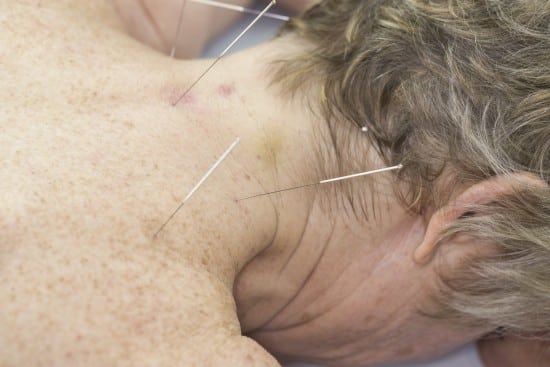
Proven Benefits of Acupuncture Treatments
Acupuncture provides a whole host of benefits, including:
Effective Pain Management
Acupuncture has been recognized for its effectiveness in treating pain, both chronic and acute. In fact, according to the National Institute of Health (NIH), several studies have found that such holistic treatments were proven to reduce pain for a variety of conditions and even manage constant pain such as low-back pain, neck pain, and osteoarthritis/knee pain.
Furthermore, in 2017, the American College of Physicians issued recommendations for treating patients who live with enduring lower back pain, including acupuncture as a proven drug-free treatment plan.
Proven Alternative to Opioid Drug Usage
As providers strive to reduce prescribing opioid drugs to manage pain, patients are directed to therapies like acupuncture as a holistic alternative that maintains an effective pain management quality. This is vital because a recent survey reveals that 49% of people reported knowing someone who has been addicted to prescription opioids; in other words, opioids are not to be taken lightly.
General Health and Wellness Benefits
While the NCCIH notes that acupuncture treatments have been proven to help treat lower back pain, neck pain, osteoarthritis, knee pain, and chronic migraines, the Acupuncture Evidence Project reviewed the effectiveness of acupuncture for 122 treatments over 14 clinical areas and have found some evidence of effect for 117 conditions. These include:
- High or low blood pressure
- Chemotherapy side effects and symptoms associated with it
- Facial pain, including dental pain
Optimize Your Acupuncture Practice’s Revenue Cycle with Holistic Billing Services!
Medicare’s expansion to include acupuncture would provide a huge benefit to your acupuncture practice and could bring in a whole new group of potential patients; how exciting! Want to optimize your practice’s revenue cycle? Partner with an expert medical billing firm!
At Holistic Billing Services, we deal exclusively with holistic healthcare practices that deliver acupuncture, massage therapy, and chiropractic treatments to communities around the country. Whether you have questions on acupuncture insurance billing or other methods to enhance your revenue cycle management, feel free to contact our team today and let us know how we can help your acupuncture practice.
As demands for holistic medicine increase from people seeking relief from a variety of conditions, more research is conducted to determine and affirm how effective these treatments can be. These studies are important both for validating the effectiveness of holistic medicine and quantifying how alternative treatments can be used. For example, acupuncture is often incorporated into a wellness plan relating to a variety of ailments and new research examines just how this practice affects patients with certain chronic illnesses.
3 Common Types of Acupuncture
Originating from traditional Chinese medicine practices, acupuncture entails inserting thin needles, through a patient’s skin, at strategic points along the body at various depths, which interrupts pain signals throughout the body and thus delivers relief.
There are several types of common acupuncture treatments, including:
Cupping Acupuncture
Cupping involves utilizing special suction cups on the patient’s skin to stimulate blood flow under the cup, which provides relief for a wide array of symptoms ranging from muscle inflammation to arthritis. While cupping alone doesn’t actually involve the use of needles, it’s often used in tandem with needles to deliver deep relief.
Scalp Acupuncture
This particular form of acupuncture is self-explanatory in that it involves specifically placing needles along the patient’s scalp at certain points and has been known to manage spinal and motor-impairment issues.
Body Acupuncture
Body acupuncture entails—you guessed it—placing needles all along a patient’s body to supply relief in an all-over manner that can be used to treat a plethora of conditions as well as deliver stress relief.
Benefits of Acupuncture
Since acupuncture treatments can be entirely customized to each patient, there are several benefits inherent to the practice, such as:
Proven Alternative to Opioid Drug Usage
While almost two-thirds of Americans have been prescribed an opioid for pain issues, 49% reported knowing someone who has been addicted to prescription opioids; in other words, opioids are not to be taken lightly.
What’s a healthy and effective alternative? Acupuncture. One meta-analysis of almost 18,000 patients across 29 randomized controlled trials found that licensed, precise acupuncture treatments were significantly more effective than the absence of the holistic approach. Acupuncture is a great alternative to such traditional, pharmacological methods of treatment because it’s minimally invasive and doesn’t have any damaging side effects.
Pain Relief
As mentioned earlier in this article, acupuncture treatments are becoming complementary—if not primary—approaches to treating chronic or acute pain. In fact, according to the National Institute of Health (NIH), several studies have found that such holistic treatments were proven to reduce pain for a variety of conditions and even manage constant pain such as low-back pain, neck pain, and osteoarthritis/knee pain.
Furthermore, in 2017, the American College of Physicians issued recommendations for treating patients who live with enduring lower back pain, including acupuncture as an effective drug-free treatment plan. As providers reduce prescribing opioid drugs to manage pain, patients are directed to therapies like acupuncture as a holistic alternative that maintains an effective pain management quality.
Overall Health Benefits
While the NCCIH notes that acupuncture treatments have been proven to help treat lower back pain, neck pain, osteoarthritis, knee pain, and chronic migraines, the Acupuncture Evidence Project reviewed the effectiveness of acupuncture for 122 treatments over 14 clinical areas and have found some evidence of effect for 117 conditions. These include:
- High or low blood pressure
- Chemotherapy side effects and symptoms associated with it
- Facial pain
- Morning sickness due to pregnancy
- Dental pain
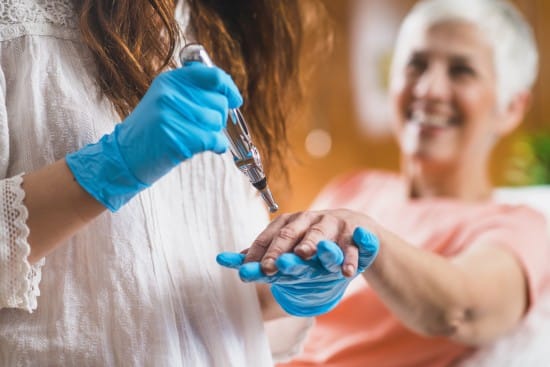
New Acupuncture Research On the Effects on Chronic Illnesses
It’s important to conduct research on holistic treatments like acupuncture in order to objectively determine how effective it can be on certain chronic illnesses. Check out these recent studies on a variety of chronic illnesses in relation to acupuncture treatments:
Meniere’s Disease
Researchers recently conducted a study on 30 patients regarding the effects of acupuncture in treating Meniere’s Disease. Results demonstrated that Meniere’s symptoms, including dizziness, tinnitus, and hearing loss, were significantly reduced in all patients with the use of the warm-promotion needling method wherein acupuncturists manipulated needles in a methodical technique to induce desired effects.
Gout
From a sample size of 120 patients, researchers found that combined auricular acupuncture—treatments performed on the patient’s ears—with warm needle acupuncture significantly enhances the efficacy of drug therapy in relieving gout pain, boosting the 82 percent effective rate to 95 percent effective.
TMJ Pain
Research conducted on 60 patients determined that warm needle acupuncture was 93.3 percent effective while standard manual acupuncture was 86.7 percent effective in reducing pain associated with TMJ.
COPD
Acupuncture was proven an effective treatment for patients living with COPD after a study of 62 patients determined this holistic plan reduces small airway obstructions, increases breathing volume, ventilation, overall respiratory function, and exercise tolerance.
Stroke
In a recent study of 60 patients, traditional treatments for stroke patients were found to be more effective in conjunction with acupuncture treatments than without them because acupuncture “increases the thrombolytic effect of urokinase for the treatment of acute cerebral infarction.”
How Educating Prospective Patients Increases Holistic Practice Acquisition
In 2019, the US National Health Council approximated that 133 million Americans were dealing with a “generally incurable and ongoing” chronic illness; of this group, about 40 million were “limited in their usual activities due to one or more chronic health conditions.” Imagine how many individuals in your community are part of these statistics and could benefit from treatment at your holistic practice!
But first, your patients have to have an awareness of your practice and how it can specifically benefit their overall health. That’s why keeping up on recent studies pertaining to acupuncture’s effectiveness on chronic illnesses can be a vital tool in connecting you with your community and speaking directly to prospective patients.
You can spend more time, energy, and resources on staying current on research, educating your community, and ultimately treating patients by taking one easy step: partner with a medical billing firm to manage your revenue cycle!
At Holistic Billing Services, we deal exclusively with holistic healthcare practices that deliver acupuncture, massage therapy, and chiropractic treatments to communities around the country. Whether you have questions on acupuncture insurance billing or other methods to enhance your revenue cycle management, feel free to contact our team today and let us know how we can help your acupuncture practice.
Most kids, as well as a lot of adults, are afraid of needles. So the pairing of acupuncture and kids might not be an obvious one. However, as more and more parents are seeking alternative methods of treatment for their children, it might be a good next step for your holistic practice to incorporate pediatric acupuncture into its services! This specialty can be incredibly rewarding work, but there are some practical steps to consider first.
What is Pediatric Acupuncture?
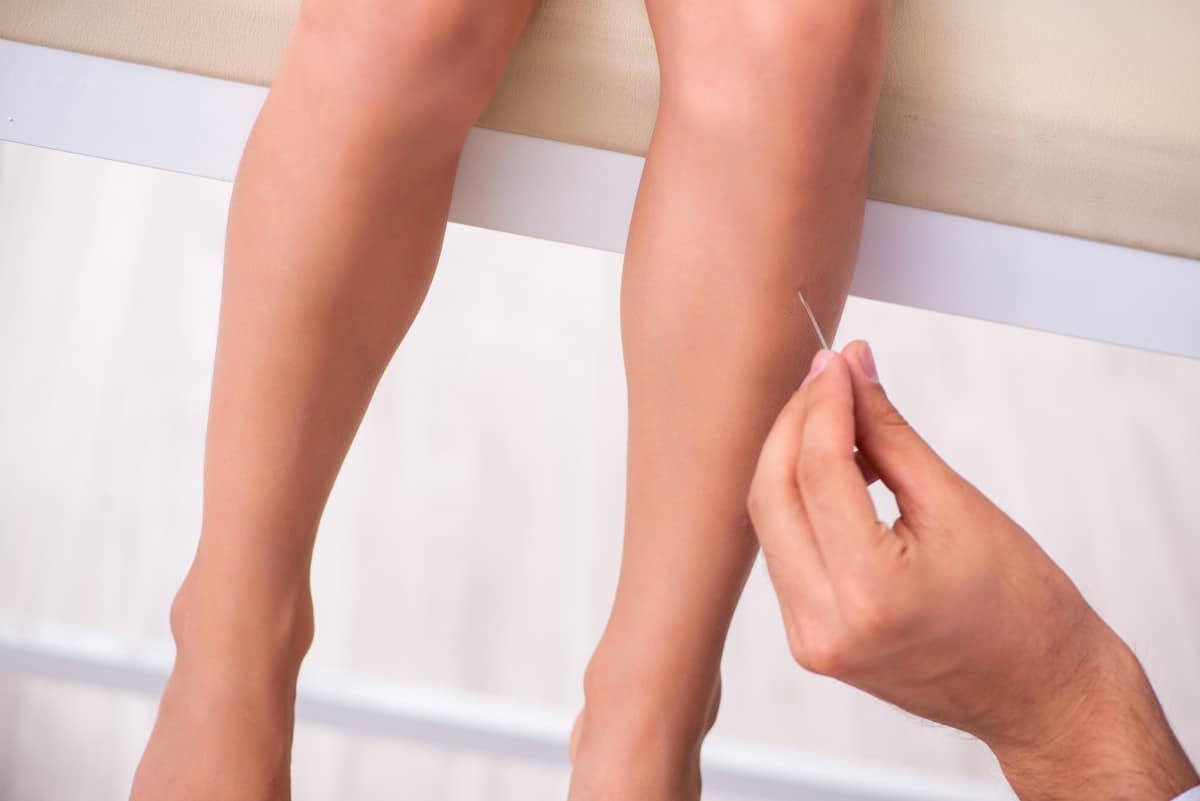 Parents are turning to acupuncture because it provides a safe resolution of illness, while also preventing future illnesses. Acupuncture and acupressure stimulate the body’s ability to restore and heal itself. Pediatric acupuncture can be the right tool that not only stimulates the immune system, but also relaxes the nervous system and regulates the digestive and hormonal systems.
Parents are turning to acupuncture because it provides a safe resolution of illness, while also preventing future illnesses. Acupuncture and acupressure stimulate the body’s ability to restore and heal itself. Pediatric acupuncture can be the right tool that not only stimulates the immune system, but also relaxes the nervous system and regulates the digestive and hormonal systems.
How Does Pediatric Acupuncture Compare to Traditional Acupuncture Treatment?
Pediatric acupuncture is commonly known as shonishin and it rarely uses needles. Instead, this form of acupuncture utilizes the practitioners’ hands and rounded tools to stimulate the acupoints of the child. The practitioner will gently and rhythmically rub, tap and press the skin to produce gentle stimulation sensations.
How to Specialize in Pediatric Acupuncture
It’s important to know the ins and outs of working with babies, kids, and teens. As with most things in life, it takes practice, practice, practice! The more kids you see the easier it will become to work with them.
Presuming you or your acupuncture specialist already have a solid foundation in theory and diagnosis, there are some critical differences in pediatrics that you need to know. For example, knowing the most common organs that are deficient in children or how to tap into the developing meridian system.
You’ll want to review the most common conditions you’ll treat children for, as this will help inform your treatment plan:
- Allergies
- Asthma
- Eczema
- Chronic Low Immunity
- Digestive Problems
- Acute Conditions: fever, cough, ear infections, colds
Nutrition is at the core of pediatric health since children are rapidly growing. You need to know what children should be eating – and avoiding – because nutrition is so central to every holistic treatment plan. It would also help to research special diets, like GFCF and GAPS, so you know when to recommend them and how to help parents implement them.
Pediatric Acupuncture Best Practices to Consider
Make Sure You Have Pediatric Acupuncture Training
While it’s acceptable to start treating kids in your practice without additional training, it’s worth finding a local colleague who specializes in treating children and who can provide expert guidance during hands-on training.
A core component of this specialty, though not used in every pediatric acupuncture treatment, is to make sure you use pediatric needles when performing procedures on kids. These needles are much smaller than adult needles and are virtually painless. With smaller needles, the procedure will be much easier to perform and will ease the mind of both the child and parent.
Consider Needleless Acupuncture Treatments
Building trust with your patients is extremely important, especially when they’re children. Part of earning and maintaining that trust is to have a backup treatment plan when a child tells or shows you they’re uncomfortable with needles or any other tools you may be wanting to use.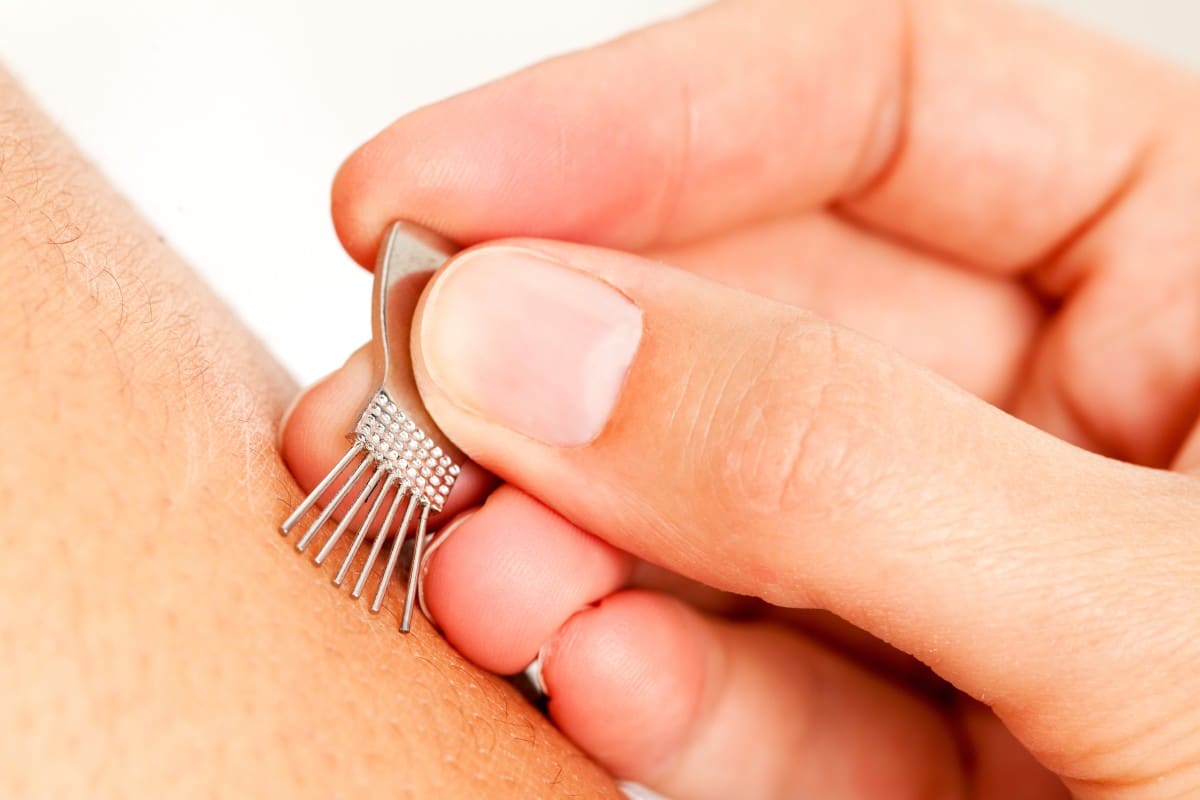
It helps to have a very wide range of tools available since some kids will like certain types of Shonishin tools and not others. For example, the tools that tap can be too stimulating and ticklish, so a pediatric patient might prefer tools that brush. It’s important to keep in mind there’s a clear power difference between the child patient and adult acupuncturist, which is why you should ensure your pediatric patients feel in control of what happens to their bodies during their visit. If a child isn’t comfortable with needles, be prepared with another plan to treat them.
Don’t Isolate Parents from Children During Treatment
When treating children, it’s important to keep the parents or guardians involved in the pediatric acupuncture treatments you’re providing. For example, if you’re treating a child under five or who is nursing, it’s important to treat the mother at the same time, if possible. Consider also treating the caregivers when treating a young child because of how inherently in tune children can be with their guardians. Unspoken emotions and energy can be transferred between parents and a child, so it’s important to keep the unit together and in communication.
Don’t Discourage Playtime
When it comes to younger patients, they might feel more comfortable sitting in their parent’s lap, especially during the initial visit, or even playing on the floor while you perform the treatment. Toys are an extremely important tool for your ability to treat kids! When they’re waiting in the waiting room, they can have these toys to play with and bring with them into the room and that creates a kind of safety. When you are treating your pediatric acupuncture patients, you can allow for distraction so that you are able to do more of what you want for the treatment.
Streamline Medical Insurance Billing for Holistic Practices with HBS!
Medical billing is especially complicated for holistic practices and can possibly overwhelm your business as you focus on growing your practice and provide care for your patients. By outsourcing your medical billing, you can leave the responsibility of insurance enrollments, credentialing, and medical billing and coding to the experts – saving you time!
As an experienced billing provider for holistic practices, Holistic Billing Services can help your practice navigate the intricacies of insurance billing claims to minimize denials, increase your revenue, and grow your practice. We understand the unique needs of holistic practices, as well as the common obstacles you face when it comes to medical billing and coding. With a knowledgeable partner by your side, you can streamline your billing and increase your revenue cycle management! To learn more about our services, talk to one of our billing and coding experts today.
As a holistic billing company, we focus on integrative health and billing insurance for holistic providers, but we are often asked by our clients for recommendations on how to promote their practice. In our experience, your acupuncture practice can gain new customers and strengthen your current client base with the right marketing.
Learn more about how your holistic practice can develop the most effective acupuncture marketing strategy for overall enhanced revenue cycle management!
Why Marketing Your Acupuncture Process Helps You Stay Competitive and Drive Additional Income

The importance of successfully marketing your acupuncture practice cannot be understated. Even if you have some of the best delivery of care to your patients, your new patient acquisition will be low if you can’t get your name out there! With the right marketing strategy, your acupuncture practice can stay competitive and continually bring in new clients—which means more revenue.
Staying competitive is crucial to driving additional income in an increasingly saturated holistic market. More people than ever before are turning to holistic medicine to maintain and restore their health. The global complementary and alternative medicine market is predicted to have an over 22% growth rate from 2021 to 2028 – eventually reaching over $ 400 billion by 2028. As more and more people turn to holistic medicine, your acupuncture practice must adopt competitive marketing techniques to stand out from the crowd.
Developing a marketing strategy for your holistic practice starts at the basics: delivering the right message. Since more people are turning to holistic medicine to alleviate their back pain and other ailments, cultivating your unique treatment approach that is both authentic to your practice and helps answer the questions clients are looking for will also gain you not only new patient acquisition, but committed clients who keep returning for more.
Acupuncture Marketing Best Practices
In such a growing market saturated with competitors, it may seem difficult to stand out from the crowd. By adopting these best practices, your acupuncture practice can better market to new patients as well as maintain existing relationships with your current client base.
Develop Your Brand
Part of what will set your acupuncture practice apart from the competition is developing your acupuncture clinic’s unique brand. This includes your message style and overall mission statement. You’ll have to address what kind of approach you’ll take to market your practice to the public and what tools you’ll use.
All of this will influence your message tone. For instance, if you’re marketing acupuncture to the elderly, you will use a different tone, style, and content than if you were attracting a millennial client base. Or, let’s say you’re focusing on delivering acupuncture services as an opioid alternative for patients recovering from addiction or surgery. You would use a much different tone of voice in your marketing that speaks to their specific needs than if you were trying to attract a more generic audience.
Grow Your Online Presence
In today’s digital age, building an online presence for your acupuncture practice is a must. This includes an optimized acupuncture website so your business can be easily accessible to those online. A successful website is one where you have the basics, such as your location, contact information, and a bit about who you are and your practice. However, you can add increased value to your website by including what makes your acupuncture practice unique – such as your treatment philosophy, team bios, and FAQs about acupuncture itself.
You also have to make your holistic practice easy to find online as well. Claim your Google business profile so local customers can help locate you in the “acupuncture practice near me” search results. Consider also adding your practice to review sites, such as Google Reviews and Yelp, for customer feedback. Since prospective patients like reading online customer reviews, these can be valuable platforms to highlight your holistic practice.
Utilize A Wide Variety of Digital Marketing Tools
Mastering omnichannel acupuncture marketing is key to reaching a variety of audiences. There are so many options out there now for reaching new customers that you don’t want to just stick to one digital marketing tool!
What digital channels you choose to market on should reflect on the audience you’re trying to reach, as well as the voice of your practice. Some digital marketing tools for your acupuncture practice can include:
- Social media marketing, including using Facebook, Instagram, Twitter, and LinkedIn.
- Content marketing, such as providing useful content like blogging on your website.
- Email marketing to stay in touch with established patients.
Regardless of what digital marketing channels you use, or how many of them, the messaging on all platforms should remain consistent. This helps deliver the authentic image and message you want about your acupuncture practice to potential new clients and established ones.
How to Create a Google AdWords Campaign to Drive New Patient Acquisition in Less Than One Hour!

A Google AdWords campaign is by far the fastest and most cost-effective way to get your site to appear at the top of Google search results. Google‘s AdWords is a pay-per-click system where you pay only when a prospective patient clicks on your ad. When rolled out effectively, Google AdWords campaigns are a great way to drive new patients to your website, and ultimately help you generate more new patients.
By following these six easy steps, you can have a killer Google AdWords campaign for your practice in less than one hour!
Step 1: Set Up a Google AdWords Account
Go to www.google.com/adwords. Setting up your account can be completed in a few minutes.
Step 2: Create Your Campaign
Once you have set up and logged in to your account, you will want to create a new advertising campaign. Campaigns should be organized by the various services you want to advertise (such as chronic pain, cupping, and manual therapy). You will later create “Ad Groups” under each campaign to target specific services.
- Set the campaign name. If you want to promote “accepting insurance,” set your campaign name accordingly. Tying your campaign name to services you want to market will keep you organized and help you identify appropriate keywords and ad groups.
- Specify a geographical location for your ads to appear in. By clicking the “Let me choose” option, you can specify the city, region, or zip code so your ads only appear to your targeted audience. Limit your locations to keep your budget manageable.
- Set your daily budget. Depending on the keywords you choose, a single click can range from 20 cents to $14 or more and will vary by location. To determine your daily budget, decide how much you are willing to spend on a campaign each month and divide it by the number of days in the month.
Step 3: Create Ad Groups
Ad groups are a collection of ads under a campaign that corresponds to a group of related keywords. Creating ad groups enables you to further segment your campaign to focus on specific products or services you want to promote.
Step 4 Generate Ad Text
After you create ad groups, you will need to set the headlines, descriptions, and URLs.
- Headline (25 characters): Write a brief statement that includes the related keywords. For example, a good headline might read “Acupuncturist Accepting Insurance.”
- Description: Next, create a two-lined description (35 characters or less) that emphasizes the benefits of your practice and includes a clear “call to action” to encourage potential patients to click, call, or contact your practice.
- Add URLs: You will add your display URL (your web address) and the destination URL (the page a patient will be sent to after clicking your ad). The destination URL should lead to a page on your website that describes your services to help prospects quickly access information on the topic for which they searched. An example could be:
Headline: Acupuncturist Accepting Insurance
Description Line 1: Acupuncture treatments for back pain.
Description Line 2: Call for your free consultation!
Display URL: http://www.acupractice.com
Destination URL: http://www.acupractice.com/services
Step 5: Choose Relevant Keywords
Choose keywords that relate to your ad group title. When brainstorming keywords, make sure you use terms and phrases that people might search for on Google to find your practice. We recommend you use the AdWords keyword tool to help you build your keyword list.
Step 6: Add Corresponding Text into Your Website
If you are advertising a special offer or particular treatment, make sure your ad links to a page on your website that displays this information to help prospective patients immediately find what they are seeking. Edit your webpage to include your keywords, the title of your ad group, and the title of your campaign.
Remember, Google is the search engine for 87% of all web queries. By creating an effective Google AdWords campaign, you can drive immediate visitors to your website and convert these online search users into new patients.
Drive Revenue to Your Acupuncture Practice With HBS!
At Holistic Billing Services, we deal exclusively with holistic healthcare practices providing acupuncture, massage therapy, and chiropractic treatments. Whether you have questions on acupuncture insurance billing or other methods to enhance your revenue cycle management, feel free to contact our team today and let us know how we can help your acupuncture practice.
The world of insurance billing is complex, and even more so for holistic practices. Understanding when to use the right acupuncture billing codes and procedures is essential to any successful medical practice – whether holistic or traditional. Accurate coding and billing practices ensure a streamlined reimbursement process so your practice can get paid and deliver the best care to your patients.
As a billing company focused on holistic healthcare providers, Holistic Billing is an expert in the world of acupuncture billing CPT codes. In any given year, roughly half of our new clients have never billed insurance before they started with Holistic Billing Services, so we are quite accustomed to their most frequently asked questions. Find the answers to many of the most common questions about Acupuncture CPT codes and billing practices below!
As acupuncture insurance billing experts, we’ve been getting numerous questions from acupuncture providers reporting claim denials for 60-minute visits that used to pay without issues. Read on for our answer to this recently asked question!
Why Are My Acupuncture Visits Exceeding 45 Minutes Getting Denied?
|
Typically, commercial insurance companies peg their reimbursement rates and procedure protocols to the Centers for Medicare and Medicaid Services’ (CMS) published guidelines. It is common to find language in insurance contracts expressing reimbursement rates as a multiple or percentage of a CMS fee schedule. Historically, the coding guidelines and pricing did not affect the average acupuncture practitioner as CMS did not recognize the most frequently used acupuncture codes. However, on Tuesday, January 21st, 2020, CMS announced their decision to cover acupuncture for chronic low back pain, defined as localized pain in the lower back that persists for more than three months. CPT Codes and Associated Fee SchedulesHere are the CPT code, fee schedule, and max units for some of the most common acupuncture billing codes:
|
Additional CMS Updates for Acupuncture PracticesAlong with the announcement that acupuncture will now be covered for chronic low pain, CMS provided pricing and usage guidance for acupuncturists. As commercial payers and Veterans Affairs (Triwest and Optum) update their systems, many will follow the new pricing and Medically Unlikely Edits (MUE) values for acupuncture codes. Reduce Claims Denials in Your Acupuncture Practice with Holistic Billing!Due to these changes, insurance companies may start denying claims with acupuncture visits exceeding 45 minutes. If your insurance payer is adopting these policies, please ensure you’re adhering to these new billing requirements to avoid these denials. If you need assistance meeting billing requirements, turn to Holistic Billing Services! With our help, you can start seeing patients covered by insurance quickly and painlessly, no matter what type of acupuncture services you offer. After you’ve successfully enrolled in our easy-to-access portal for health insurance billing, you’re ready to get started generating revenue for your acupuncture services! Just send us the details of the treatment you’ve provided and our acupuncture billing experts take care of the rest. Have additional questions about medical credentialing for holistic practices, EHR, or medical billing for your acupuncture practice? Reach out to one of our experts today! |



